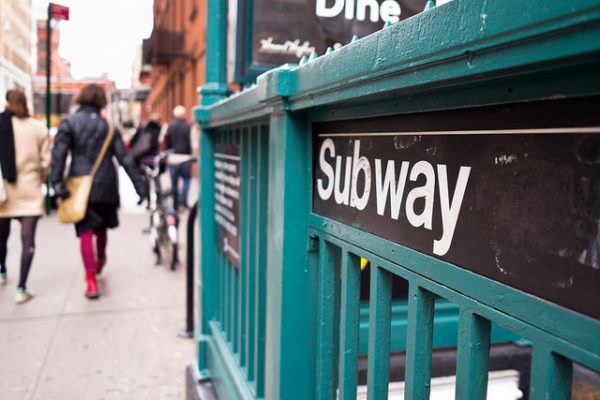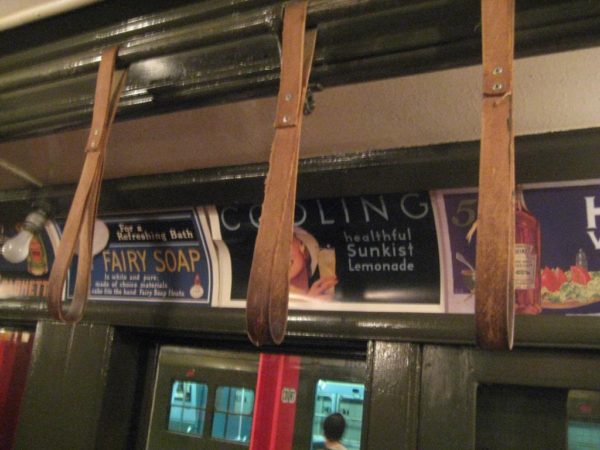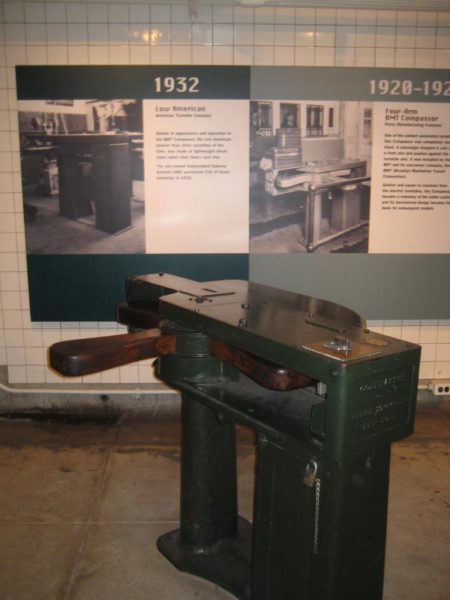:: Guest blog post by Andy Hong ::
 The subway is an excellent way to get around New York. Because of it, you are unlikely to need to have a car or take a taxi. It’s a little grimy and ratty, but beautifully so. Sure, it’s not as shiny and slick as Paris, Tokyo, London, or even Moscow, but keep in mind that this is the oldest subway system in the world, and it operates 24 hours a day, which is something that none of the others do. Make sure that you have a subway map to reference. The days of having to monkey around with a folding map in a crowd are over as you can get a map for your smartphone. Even better, there are apps that can tell you which trains are running and how often and can tell you the best routes from point A to B. When referencing the maps, note the differences between expresses and locals. Getting stuck on a local can be painstakingly slow, and getting on an express can be frustrating when your train zips by the local stop that you want off at. There may be times that you want to skip the locals all together and catch a cab or Uber to an express train stop. This can be especially true if you find yourself out late, where catching a local can mean standing on an empty platform for 45 minutes at 2 in the morning.
The subway is an excellent way to get around New York. Because of it, you are unlikely to need to have a car or take a taxi. It’s a little grimy and ratty, but beautifully so. Sure, it’s not as shiny and slick as Paris, Tokyo, London, or even Moscow, but keep in mind that this is the oldest subway system in the world, and it operates 24 hours a day, which is something that none of the others do. Make sure that you have a subway map to reference. The days of having to monkey around with a folding map in a crowd are over as you can get a map for your smartphone. Even better, there are apps that can tell you which trains are running and how often and can tell you the best routes from point A to B. When referencing the maps, note the differences between expresses and locals. Getting stuck on a local can be painstakingly slow, and getting on an express can be frustrating when your train zips by the local stop that you want off at. There may be times that you want to skip the locals all together and catch a cab or Uber to an express train stop. This can be especially true if you find yourself out late, where catching a local can mean standing on an empty platform for 45 minutes at 2 in the morning.
For ease, getting a metro card is a smart choice (the alternative is getting a small paper stub ticket every time you have to use the subway). There is now an initial $1 charge for the card, but it doesn’t cost anything to refill it. Each trip on the subway is pretty pricey, and it can add up quickly. There is a threshold for when you want to go ahead and get a week-long metro card. I think that it is something like you break even: if you will be riding for five or more days with at least two trips on the subway each day. However, I’m not sure about that math, so make sure you check it out yourself.
Many of the subway stations are engineering marvels in themselves. These include Fulton Street, Times Square, Columbus Circle, Atlantic Avenue, Penn Station, and the old World Trade Center. Most people don’t pay much attention to the structure, logistics, and operations of these mega stations, and possibly you won’t either. But some of these stations are architectural beauties (Grand Central) or are artistic (66th Street) and you might want to make a point to see them. I’m sure that there are websites that can point you in the right direction. There is also a new wave of graffiti art, and there are websites that can point you to where the best of those are located (both above and below ground).

 If you are really interested in the subway (and don’t be embarrassed if you are, because it is fabulously interesting), the Transit Museum on Atlantic Avenue is a phenomenal museum that is located in an old subway station. The two exhibits that we love the most there are the history of turnstiles and the collection of original subway cars which you are able to walk in and out of. The cars are original, and some of the older cars still exhibit the racist and sexist advertising of their times. Afterwards, while you’re in the neighborhood, head over to Junior’s and get yourself a big heaping pile of pastrami. Carnegie Deli has recently closed, so Junior’s is the best place to go now.
If you are really interested in the subway (and don’t be embarrassed if you are, because it is fabulously interesting), the Transit Museum on Atlantic Avenue is a phenomenal museum that is located in an old subway station. The two exhibits that we love the most there are the history of turnstiles and the collection of original subway cars which you are able to walk in and out of. The cars are original, and some of the older cars still exhibit the racist and sexist advertising of their times. Afterwards, while you’re in the neighborhood, head over to Junior’s and get yourself a big heaping pile of pastrami. Carnegie Deli has recently closed, so Junior’s is the best place to go now.
Photo Credit 1: Phil Roeder, CC BY 2.0, flickr.com, December 14, 2014.
Photo Credits 2 and 3: Andy Hong.















Leave a Reply
Join the conversation by submitting a comment to this blog post below.